What is an RCD: device, principle of operation, existing types and labeling of RCDs
Any electrical network must have a protection device, but not everyone knows what an RCD is and what principle of its operation. Decoding of the abbreviation looks like this - protective shutdown device.
This electric low-voltage device is designed to turn off the protected section of the circuit when creating a differential current exceeding the rated value for this device.
In our article we will try to analyze in detail the device and the principle of operation of the RCD, consider the existing varieties and figure out what information the labeling of the residual current devices contains.
The content of the article:
The purpose of the protection device
The grounding device of the RCD is a PE conductor of neutral conductive housings or parts of electrical mechanisms with a resistance of not more than 4 ohms.
If a leakage current occurs, these items of equipment may be energized, which poses a danger to human and animal life in contact with them, as well as property as a whole.
To save from receiving electrical injuries is the calling of survey devices. If a leakage current is detected, they turn off the voltage.
The greatest danger lies in the fact that such disturbances in the circuit are invisible and, in rare cases, noticeable, when you touch the device you can feel a slight electric shock.
The main reason for this phenomenon is a violation of the insulating layer of the wiring. Uncontrolled processes can cause great harm, so protective equipment is gaining great popularity in the domestic environment.
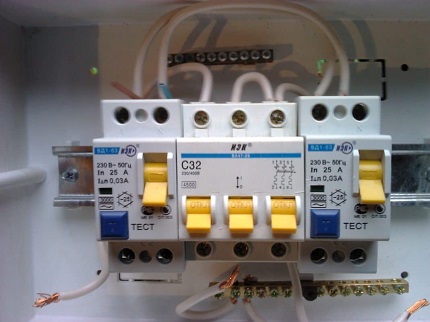
The use of RCDs is most common in single phase networks with alternating current and grounding of the neutral line, as well as with voltage indicators up to 1 kW in the format of domestic power supply.
Design RCD
The optional features of the protective mechanism will help to understand the principle of operation of the RCD, namely the reproducible reaction of the device to current leakage.
Key work nodes include:
- transformer differential sensor;
- trigger element - a mechanism that breaks an incorrectly functioning electrical circuit;
- electromagnetic relay;
- control unit.
Counter windings are connected to the sensor - phase and zero. Under normal network operation, these semiconductor elements form magnetic fluxes in the core that have the opposite direction with respect to each other. Due to this, the magnetic flux is zero.
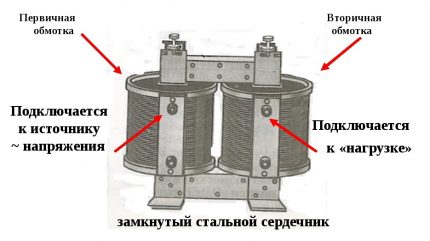
An electromagnetic relay is connected to the secondary winding wound on the transformer magnetic circuit. If the network meets standard operating conditions, it is not involved.
When a current leak occurs, all work changes dramatically. Phase and neutral conductors begin to pass different amounts of current. Now the force value and the direction of magnetic fluxes on the transformer core will also have different parameters.
In the secondary turns, current appears and when the set values are reached, the operation of the electromagnetic relay is reproduced. It is paired with a trip mechanism. This bundle at the right time reacts and disengages the electrical network.

The test unit is represented by a resistance mechanism - a certain load connected bypassing the differential sensor. This element simulates a leakage of current and thus checks the operability of the device. We talked about verification methods in more detail. in this article.
The principle of operation / operation of the RCD is as follows: supplying current from the phase line to the control resistance and then to the neutral wire, bypassing the sensor.
Thus, the conditions of different current indicators at the input and output of the device are created. This imbalance should lead to the start of the shutdown node.
Depending on the developers, the circuitry device may vary, however, the principle used in the operation of the RCD will be identical for all models.
The principle of operation of the protective mechanism
Consider why you need to use an RCD. The operation of the safety device is based on the measuring method.
The input and output parameters of the currents flowing through the transformer are recorded. If the first value is greater than the second, this means that a current leakage occurs in the circuit and the device reproduces a trip. If the parameters are identical, the device does not work.

For a better understanding, consider how an RCD will work in a household switchboard with a bipolar system.
An input two-wire wire (phase and zero) is connected to the upper terminal blocks.The phase and zero are connected to the lower terminal blocks, laid to the load site, for example, to the power outlet of the boiler or electric kettle. Protective grounding of the device will be performed by cable, bypassing the RCD.
In standard operating mode, the movement of electrons is performed along the line-phase from the incoming cable to the electric heater of the boiler / kettle, flowing through the differential protection device. Back they move to the ground again through the RCD, however, along the neutral line.
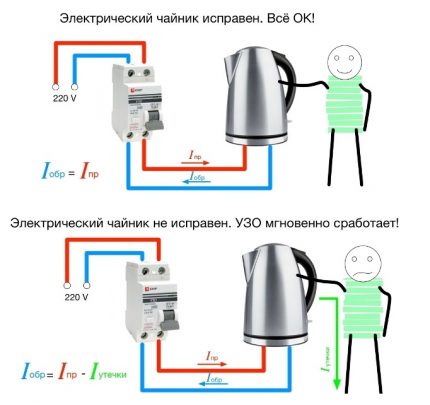
For example, in the heating element of the device, the insulation was damaged. Thus, through the water inside, the current will partially be conducted by the housing, and then go into the ground by wiring a protective device.
The residual current will return in a neutral line through the RCD. However, its strength will become less by the amount of leakage compared to incoming.
The difference of indicators is calculated by the differential transformer. If the number is larger than the allowed, the device instantly reacts and breaks the circuit.
In our other article, we made recommendations for choosing and connecting correctly. RCD for the boiler.
The feasibility of using an RCD
Consider why it is necessary to use an RCD and from what negative factors of influence the device provides protection.
First of all - phase closure on the body of electrical engineering. Basically, the problem areas include heating elements of heaters and washing machines. It is worth noting that a breakdown is formed only when the heat-generating part is heated by current.
Also, with incorrect connection of wires. For example, if twists are used without a terminal box, which are subsequently recessed into the wall and covered with a layer of plaster. Since the surface has high humidity, this twist will be a breakdown that will leak into the wall.
In this case, the differential protective mechanism will constantly de-energize the line until the section is completely dry or until the connection unit is redone.
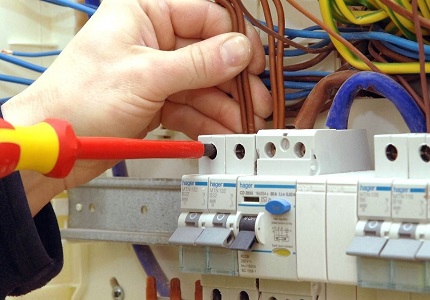
The scope of survey devices is quite diverse - from public buildings to large-scale enterprises. They complete electrical structures and circuits intended for reception and distribution: shields in residential buildings, power supply systems for individual consumption, etc. The main thing with this is right choose RCD by power.
Types of devices and their classification
Developing companies give their products diverse capabilities that must be taken into account when determining the desired type of RCD, based on the specific operating conditions of the electrical network.
In order for an ordinary consumer to be able to choose the necessary protective shutdown device among the variety of models offered, a classification system was created based on the following characteristics:
- trigger principle;
- kind of differential current;
- time delay of the tripping differential current;
- number of poles;
- installation method.
Next, we consider in more detail each of these classifications.
Classification # 1 - inclusion method
There are only two switching methods - electromechanical and electronic. In the first case, the machine will turn off the power on the damaged line regardless of the mains voltage. The main working body is a toroidal core with windings.
When a leak is formed, voltage is generated in the secondary circuit to activate the polarization relay, which leads to the activation of the shutdown mechanism.
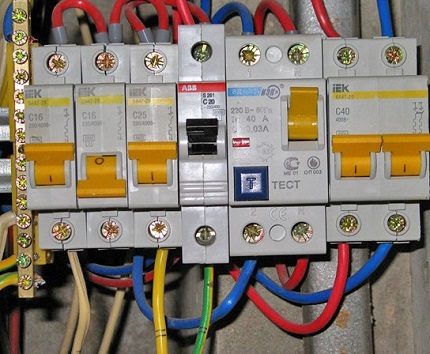
The functioning of an apparatus with electronic filling depends entirely on the additional voltage, i.e. external power required. Here, the working body is an electronic board with an amplifier.
Inside such a mechanism there are no additional sources that accumulate energy, therefore, external circuit electricity is used to operate the circuit and, if there is no voltage, the device will not break the circuit.
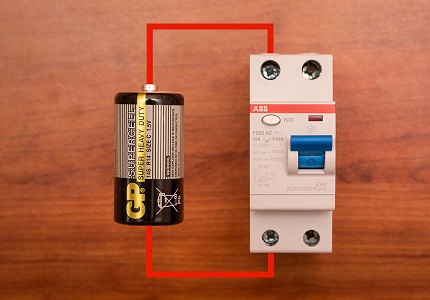
An example of the operation of an electronic RCD installed on the line with the socket from where the microwave oven is fed: a zero phase has been interrupted, in addition to this, a microwave circuit wiring malfunction is formed in the same period and the phase is shorted to the case, i.e. dangerous potential appears on it.
If you touch the stove, the electronic type of protection will not be activated, because no mains supply. It is precisely because of the unreliability in comparison with the electromechanical analog that this device received less distribution.
Classification # 2 - by type of leakage current
All models of manufactured safety automats are additionally divided by the current of the load passing through the device. They handle the voltage of a given waveform format.
On the case of all devices and in the passport the nominal value of the operating voltage is registered. This parameter should correspond to the range of the rated current of electrical engineering.
Speaker type will be activated when an instantaneous leakage voltage occurs in a controlled circuit or when it is wave-wise. These devices are marked with the inscription "AC" or the symbolic sign "~".
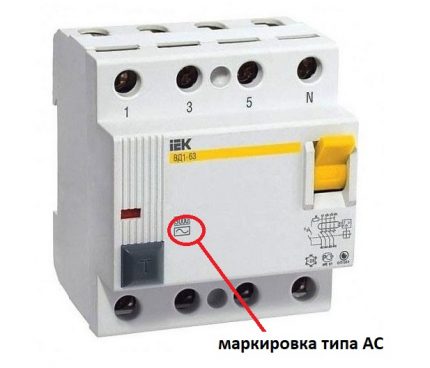
Type A is triggered by the instantaneous formation of an alternating or ripple breakdown current in a controlled circuit, or when they slowly increase.
Such a mechanism can be used in any presented situations. The abbreviation "A" or a symbol is applied to the machine case, as in a graphic image in a rectangle ![]() .
.
Most often, the A-type is connected to a circuit where load regulation is reproduced by cutting off the top of the sinusoid, for example, adjusting the speed of the motor's reverse movements with a thyristor converter.
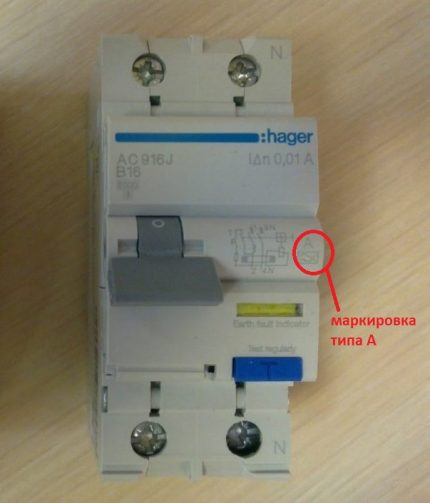
The RCD of subspecies B is effective for reproducing the reaction in a slave electrical circuit of a constant, alternating or converted (rectified) leakage current.
This is an expensive equipment designed for industrial facilities. In domestic conditions, they do not apply.
The presented shutdown protection devices of type A, B and AC are designed for an activation time of 0.02-0.03 s.
Classification # 3 - by type of time delay
This classification suggests a difference in two types: S and G. Automatic protection of type S can be characterized by a selective format reaction. The exposure time delay corresponds to a range of 0.15-0.5 s.It is advisable to choose it in the case of a group connection of an RCD.
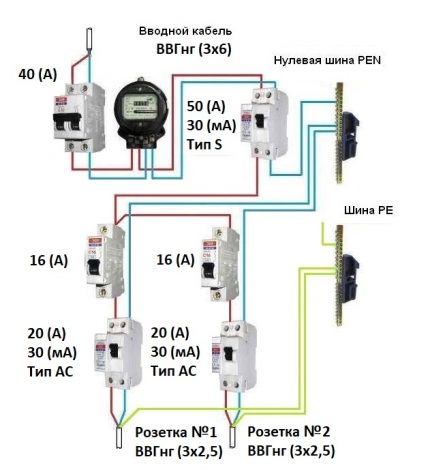
According to the scheme, two load groups are placed in the shield in the form of sockets No. 1 and No. 2, to which RCDs of type A are connected, and a second circuit breaker is connected to the entrance of the room.
If a breakdown occurs in one beam, the input device is activated only when the collective device does not fulfill its function and does not disconnect the defective section.
The selectivity of activating an open circuit can be performed using another method - by means of the settings of the leakage current. This method has received the greatest distribution.
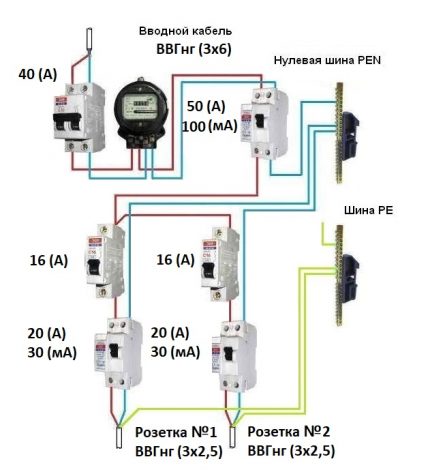
Let us take a similar previous circuit and modify it in such a way: we select an AC type automatic machine only with a differential setpoint of 0.03 A, and at the input there will be a similar device only 0.1 A.
There are situations when the differential current in the fault circuit exceeds the nominal settings of the two protection devices. For the first circuit, the selectivity will not be violated, and in the second, the cut-off current can be supplied by any of the connected devices.
The apparatus of the form factor G is also represented by the selective principle of operation and has a shutter speed of 0.06-0.08 s. All described selective species are designed for the influence of extreme currents - up to 15 kA.
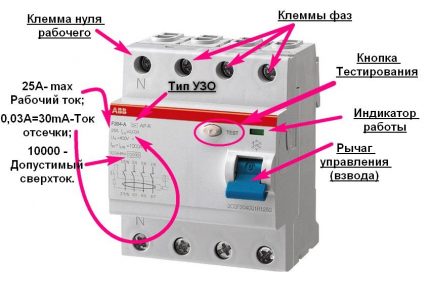
The current limit is an important parameter of choice, because It is precisely because of this that safety is ensured.
For example, in rooms with high humidity, power supply of electrical appliances is carried out by connecting disconnection devices to the circuit with a setting of 0.01 A. For standard living conditions - 0.03 A.
For the organization of fire safety of buildings - 0.1-0.3 A. We recommend that you read the tips on selection of fire protection RCD and the intricacies of its installation.
Classification # 4 - by the number of poles
Due to the fact that the automatic device operates on the principle of comparing the values of the current passing through it, the number of poles at the machine will be identical to the number of conductive lines.
Bipolar RCD is designated as 2P. It is included in a single-phase circuit to provide human protection and prevent possible causes of fire.
Marking of four-pole UZO - 4P. They are designed to work in a network with three phases. A combination of the installation is also possible, for example, a four-pole device is inserted into a two-wire network.
However, this will not realize the full potential of the device, which is economically disadvantageous.
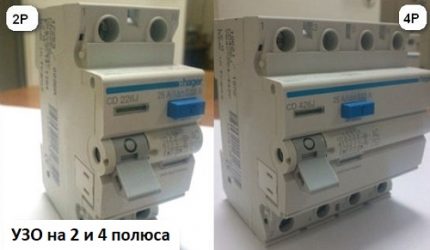
Classification # 5 - by the method of installation
Since differential protective devices are implemented in various cases, they can be used as stationary or portable.
In the second case, the apparatus is equipped with an extension wire. Din rail mount devices mounted in an electrical panelthat is located either in the corridor or in the apartment.
There are also options RCD socket and an RCD plug. In both the first and second cases, any electrical appliance connected by such a mechanism does not pose a danger to humans if it breaks.
Full decoding of marking values
Without fail, the name of the developer company is present on the device case. The following is a standardized marking with a serial number.
To decrypt the abbreviation we will use such an example [F] [X] 00 [X] - [XX]:
- [F] - protective shutdown device;
- [X] - execution format;
- 00 - digital or alphanumeric designations of a series;
- [X] - number of poles: 2 or 4;
- [XX] - characteristics according to the type of leakage current: AC, A and B.
Also, the nominal parameters of the device will be indicated here, to which special attention should be paid when choosing.
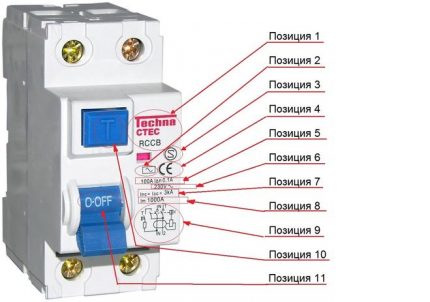
The maximum parameters for which the devices are designed include: voltage Uncurrent In, the differential value of the open circuit current IΔnon and off ability Im circuit switching capacity Icn.
The main marking values must be positioned so as to remain visible after installation. Some parameters can be applied on the side or on the rear panel, visible only before the installation of the product.
The outputs intended only for connecting the neutral wire are indicated by the Latin symbol "N". The disconnected RCD mode is indicated by the symbol "ABOUT"(Circle), included - short vertical bar"I».
Not every product has the optimum ambient temperature. In those models where there is a symbol![]() - this means that the range of the operating mode is from -25 to + 40 ° C, if there are no indications - we mean standard indicators from -5 to +40 ° C.
- this means that the range of the operating mode is from -25 to + 40 ° C, if there are no indications - we mean standard indicators from -5 to +40 ° C.
Conclusions and useful video on the topic
Video material with a detailed overview of all the constituent elements of the overview protection mechanisms, their purpose and the principle of interaction with each other:
Description of all types of circuit breakers, as well as tips on how to make your choice:
The answer to the eternal question of what to choose - on a differential machine, or on an RCD + installation secrets:
The use of RCDs is a profitable and correct solution not only from the side of economy, but, from the point of view of fire safety, and human protection.
It is recommended to maximize its potential in domestic conditions, installing on all groups of electrical engineering to ensure complete isolation from the effects of electricity.
Do you have questions about the principle of operation or classification of residual current devices? Or do you want to supplement the material with useful information? Please write your clarifications in the comments section, ask questions - experts and competent visitors to our site will try to answer you as detailed as possible.

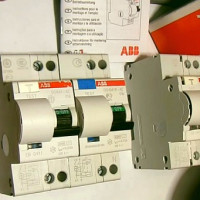 How to choose the right RCD by capacity: existing types of RCD + subtleties of choice
How to choose the right RCD by capacity: existing types of RCD + subtleties of choice 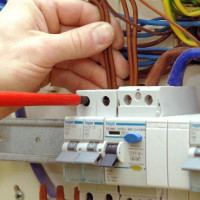 Differential circuit breaker: purpose, types, marking + selection tips
Differential circuit breaker: purpose, types, marking + selection tips 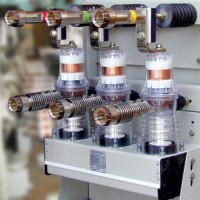 Vacuum switch: device and principle of operation + nuances of choice and connection
Vacuum switch: device and principle of operation + nuances of choice and connection 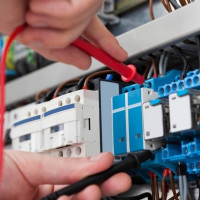 What is the selectivity of circuit breakers + principles of calculation of selectivity
What is the selectivity of circuit breakers + principles of calculation of selectivity 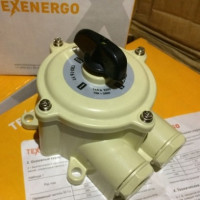 Batch switch: what is it and why is it needed + wiring diagram
Batch switch: what is it and why is it needed + wiring diagram 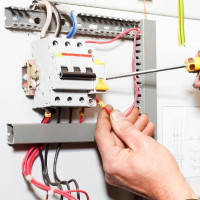 Marking circuit breakers: how to choose the right machine for wiring
Marking circuit breakers: how to choose the right machine for wiring  How much does it cost to connect gas to a private house: the price of organizing gas supply
How much does it cost to connect gas to a private house: the price of organizing gas supply  The best washing machines with dryer: model rating and customer tips
The best washing machines with dryer: model rating and customer tips  What is the color temperature of light and the nuances of choosing the temperature of the lamps to suit your needs
What is the color temperature of light and the nuances of choosing the temperature of the lamps to suit your needs  Replacement of a geyser in an apartment: replacement paperwork + basic norms and requirements
Replacement of a geyser in an apartment: replacement paperwork + basic norms and requirements
In my apartment there were ordinary traffic jams, and when there were voltage drops, they did not work. At first I did not pay attention to this, but when I found out that it was unsafe, I decided to install an RCD. I bought an RCD certified in order to protect my apartment completely.After that, during power surges, the RCD trips, thereby protecting the apartment from a short circuit and subsequent fire.
Good afternoon, Michael. It turns out that the RCD was installed, but the plugs, which are an anachronism, were left? You did not specify which device is mounted, so I want to warn that the PUE imposes a number of restrictions on the installation of RCDs as the only protection - this is covered in clause 7.1.6. In order not to quote, I attached a screenshot of a fragment of the Rules.